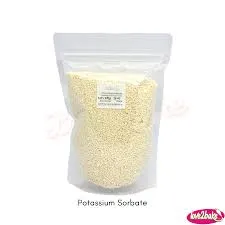
Exploring the Uses and Benefits of Maltodextrin and Monosodium Glutamate in Food Products
The Role of Maltodextrin and Monosodium Glutamate in Food Science
In the realm of food science and culinary applications, maltodextrin and monosodium glutamate (MSG) play pivotal roles in enhancing the flavor, texture, and overall quality of various food products. Understanding these ingredients can help consumers make informed choices about their food consumption and appreciate the science behind food formulation.
The Role of Maltodextrin and Monosodium Glutamate in Food Science
In addition to its functional attributes, maltodextrin has a relatively high glycemic index (GI) compared to other carbohydrates, which raises concerns among health-conscious consumers. However, its versatility makes it a popular ingredient in sports drinks and energy supplements, as it provides a quick source of energy during physical activity. Additionally, the food industry frequently utilizes maltodextrin as a carrier for flavors and nutrients, enhancing their stability and dispersibility in various formulations.
maltodextrin monosodium glutamate

On the other hand, monosodium glutamate is a widely used flavor enhancer that brings out the umami taste, often described as the fifth basic taste alongside sweet, bitter, sour, and salty. It is a sodium salt derived from glutamic acid, an amino acid found abundantly in nature. MSG is commonly added to soups, processed meats, and snacks to elevate their flavor profile. The perception of umami is closely associated with the enjoyment of food, making MSG a popular ingredient in Asian cuisines and many processed foods.
Despite its widespread use, MSG has garnered a controversial reputation over the years. Some individuals report experiencing adverse reactions to MSG, commonly referred to as “Chinese restaurant syndrome,” characterized by symptoms such as headaches or nausea. However, extensive scientific research, including studies conducted by the U.S. Food and Drug Administration (FDA) and the World Health Organization (WHO), has generally deemed MSG as safe for consumption in normal dietary amounts.
The combination of maltodextrin and MSG can create interesting culinary applications, particularly in the preparation of gourmet dishes and processed foods. For instance, using maltodextrin as a bulking agent alongside MSG can enhance the sensory experience of a dish without overwhelming the palate with excessive saltiness. In molecular gastronomy, maltodextrin is often employed to encapsulate flavors and create unique textures, seamlessly integrating with the umami profile that MSG provides.
In conclusion, both maltodextrin and monosodium glutamate serve essential roles in the food industry, contributing to flavor enhancement and texture improvement. While there are some concerns regarding health implications, they remain indispensable for food manufacturers aiming to create products that appeal to consumer preferences. By understanding these ingredients, consumers can better appreciate the innovation behind modern food science, making informed choices that resonate with their dietary needs and tastes.
-
The Safety Challenges of Ammonium Nitrate FertilizerNewsJun.26,2025
-
The Critical Role of Mining ChemicalsNewsJun.26,2025
-
Shelf Life of Glacial Acetic Acid Food GradeNewsJun.26,2025
-
Enhancing PVC Longevity with 1,2,3-Benzotriazole InnovationsNewsJun.26,2025
-
China’s Dominance in Food Additive ProductionNewsJun.26,2025
-
Can Aluminum Hydroxide Replace More Toxic Alternatives?NewsJun.26,2025
-
PE and PP Plastics with Benzotriazole AdditivesNewsJun.12,2025
Hebei Tenger Chemical Technology Co., Ltd. focuses on the chemical industry and is committed to the export service of chemical raw materials.
-

view more DiethanolisopropanolamineIn the ever-growing field of chemical solutions, diethanolisopropanolamine (DEIPA) stands out as a versatile and important compound. Due to its unique chemical structure and properties, DEIPA is of interest to various industries including construction, personal care, and agriculture. -

view more TriisopropanolamineTriisopropanolamine (TIPA) alkanol amine substance, is a kind of alcohol amine compound with amino and alcohol hydroxyl, and because of its molecules contains both amino and hydroxyl. -

view more Tetramethyl Thiuram DisulfideTetramethyl thiuram disulfide, also known as TMTD, is a white to light-yellow powder with a distinct sulfur-like odor. It is soluble in organic solvents such as benzene, acetone, and ethyl acetate, making it highly versatile for use in different formulations. TMTD is known for its excellent vulcanization acceleration properties, which makes it a key ingredient in the production of rubber products. Additionally, it acts as an effective fungicide and bactericide, making it valuable in agricultural applications. Its high purity and stability ensure consistent performance, making it a preferred choice for manufacturers across various industries.











